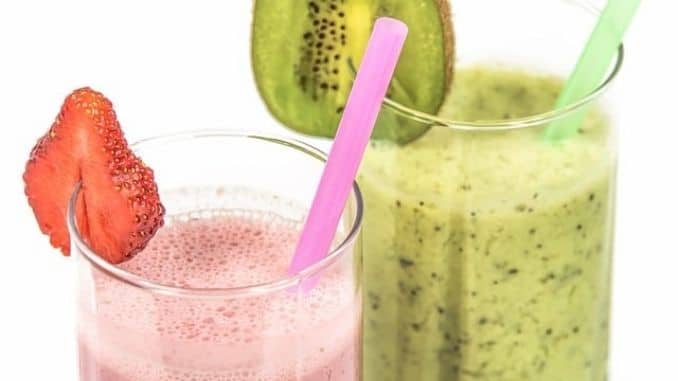
It wasn’t that long ago that the word “probiotics” created only confused looks on people’s faces. Now, most of us know that these beneficial microorganisms can help balance the friendly bacteria in the digestive system, providing a number of health benefits.
Armed with our new knowledge, we’re consuming more foods that are rich in probiotics, including miso, tempeh, kombucha, buttermilk, kimchi and soft or aged cheeses. But by far the most popular probiotic-rich food has been yogurt.
Between 2010 and 2015, yogurt sales in the United States increased from $6.2 billion to $7.7 billion. Greek yogurt alone grew from $391 million in 2010 to $3.7 billion in 2015. Because of sustained customer interest in both yogurt and probiotics, estimates were that sales would continue to grow at least through the year 2022.
According to Nielsen data, however, yogurt sales fell by 6 percent in February 2019. As to why, experts pointed to the idea of “yogurt fatigue,” suggesting that the yogurt surge may be coming to an end because of a combination of too many flavors and style combinations, and the increase in other health products that contain probiotics.
One of those other healthy products is kefir. Although it’s been around for thousands of years, it’s experienced a recent surge in popularity lately, with new product launches growing more than threefold between 2011 and 2016. The trend shows no signs of slowing down.
Kefir and yogurt are similar, but they’re not the same, which has left many consumers confused. Which one is better for health? Which one tastes better? When is it best to use one or the other? We answer these questions and more below.
What’s the Difference Between Kefir and Yogurt?
Consumers typically notice the first difference in how they consume these two products: eating yogurt versus drinking kefir.
Does that mean that kefir is simply drinkable yogurt? Not exactly.
Both products originate from milk and undergo culturing, featuring beneficial live bacteria in their composition. Both have similar creamy-yet-tart tastes, and both are rich in nutrients like protein, calcium, B vitamins and probiotics.
That’s about where the similarities end, though. Let’s look at some of the main differences between the two.
How Yogurt and Kefir Are Made
The kefir grains kickstart the fermentation process, resulting in a new batch of kefir in about a day. The grains are then filtered out and used for the next batch.
Yogurt is generally made from a “thermophilic” culture (heat-loving), which means it works best in the heat, fermenting at about 110 degrees Fahrenheit. Instead of using something like the kefir grains, yogurt requires previous batches of yogurt or a powdered starter to make new batches. A new batch of yogurt becomes a starter for the next batch, and so on.
Yogurt can be fermented at room temperature too, with a mesophilic starter, but it creates a thinner, more drinkable yogurt. Most commercially available yogurt is made with a thermophilic starter.
If you’re making kefir at home, it requires daily maintenance to stay healthy. In other words, you must transfer the kefir grains to fresh milk every 24 hours unless you’re using a single-use culture manufactured in a lab. Yogurt can be made once a week or so or as needed if you’re using a powdered starter.
Types of Bacteria
Yogurt contains between two to seven different types of beneficial bacteria that help promote smooth digestion and provide “food” for the beneficial bacteria that already exist in your gut.
These include strains like Bifidobacterium lactis, Lactobacillus acidophilus, Lactobacillus bulgaricus, and Streptococcus thermophilus. Greek yogurt, however, it is a great source of protein, typically contains only two of these species.
These bacteria are more like tourists than new residents, however, passing through the digestive tract, feeding the friendly bacteria that are already there, and then going on their merry way out of the body along with the rest of the waste. They keep the microbiome you have healthy, but they don’t alter it.
Kefir has a larger range of different types of healthy bacteria, usually around 12 strains, including Lactobacillus acidophilus ― and many other types of Lactobacillus ― Leuconostoc mesenteroides, Pseudomonas, and Streptococcus thermophilus.
In fact, kefir contains about three times the number of probiotics than yogurt because of the “kefir grains” used for fermentation. One serving of yogurt may contain about one billion probiotic organisms, whereas one serving of kefir may contain about 40 billion.
The probiotics in kefir are also different than those in yogurt as it’s believed they move in and stay. In other words, they colonize the microbiome so that it has more friendly bacteria than it did before you drank the kefir. That’s why kefir is often used to help improve, rather than just maintain, the health of the gut.
Though these probiotics make basic kefir sourer than yogurt, they may also create more benefits for the digestive and immune systems and overall health in general.
Beneficial Yeast
In addition to the larger number of probiotics, kefir also contains beneficial yeasts like Saccharomyces kefir and Torula kefir, which help control and eliminate destructive pathogenic yeasts in the body. These yeasts penetrate the lining of the intestine where unhealthy yeasts live, then clean them out.
Some commercial brands of kefir don’t contain these yeasts, however, if a starter culture without yeast is used. In those cases, the product is more like yogurt, although it is still likely to contain more species of friendly bacteria.
Taste and Consistency
The differences in taste and consistency between yogurt and kefir are noticeable to consumers. Yogurt has a thicker consistency, is sold as a food and typically eaten with a spoon, kefir has a thinner consistency and is sold as a beverage.
The taste is also slightly different, although it often depends on the sweeteners and flavors added to the product. In general, kefir has a more tangy or sour taste than yogurt.
Other Related Products
Draining the whey from the finished product can thicken both yogurt and kefir. Drained yogurt becomes a thicker Greek-style yogurt, or with longer drain times, yogurt cheese (labneh).
Draining kefir can create spoonable kefir, soft spreadable cheese or even hard cheese.
Which Is Best for You?
Although there’s room in any diet for both of these healthy foods, if you’re trying to choose between them, keep these things in mind.
First of all, if you just finished treatment with antibiotics, or if you’re struggling with leaky gut, kefir may be the better choice. The higher level of colonizing friendly bacteria may help to restore the health of the microbiome while the yeasts may help to improve intestinal health.
If you are just starting to consume probiotics, or if you have a health condition where too many probiotics may not be ideal, such as AIDS or other conditions that weaken the immune system, yogurt may be a better choice. The bacteria in kefir are helpful in healthy people but, in those with compromised immune systems, there is a small risk of increased infections.
Here’s a further breakdown of when to choose one or the other:
- If you have allergies: Kefir may be the better choice. Studies have found that it may reduce allergic inflammation by suppressing cytokine production and moderating the body’s allergic response.
- If you’re worried about cancer: Again, kefir is the way to go. Studies have found that kefir can help inhibit tumor growth and encourage cancer cells to die.
- If you want to lose weight: Choose Greek yogurt. It has more protein than regular yogurt or kefir and will help keep you satisfied between meals.
- If you need to control blood sugar levels: Kefir may help limit how much cholesterol the body absorbs from food. In one study, those who drank kefir twice a day experienced significant decreases in their total and LDL “bad” cholesterol levels compared to those who drank low-fat milk.
- If you want to cut back on fat: Choose yogurt. In general, kefir contains fatter than yogurt does.
- If you’re lactose intolerant: You may be able to enjoy both yogurt and kefir because the bacteria in them help digest the lactose in the milk. If you notice symptoms with yogurt, try kefir, as is has more of that lactose-eating bacteria.
- If you have a compromised immune system: Choose yogurt. The extra probiotics in kefir may not be safe for you.
- If you are constipated: Both yogurt and kefir can help ease constipation. A 2016 study, for example, found that daily consumption of conventional yogurt helped improve symptoms of constipation during pregnancy. An earlier 2014 study found similar results for kefir.
- If you have diarrhea: Studies so far have not consistently found any benefit with kefir on diarrhea. In fact, in one recent study, researchers found that kefir did not help prevent antibiotic-related diarrhea. Studies on yogurt have found a benefit, showing that it can help reduce the incidence of antibiotic-associated diarrhea.
For your guide to improving your digestive health, make sure to check out our 14-Day Digestive Health Quick Start Program, here!





